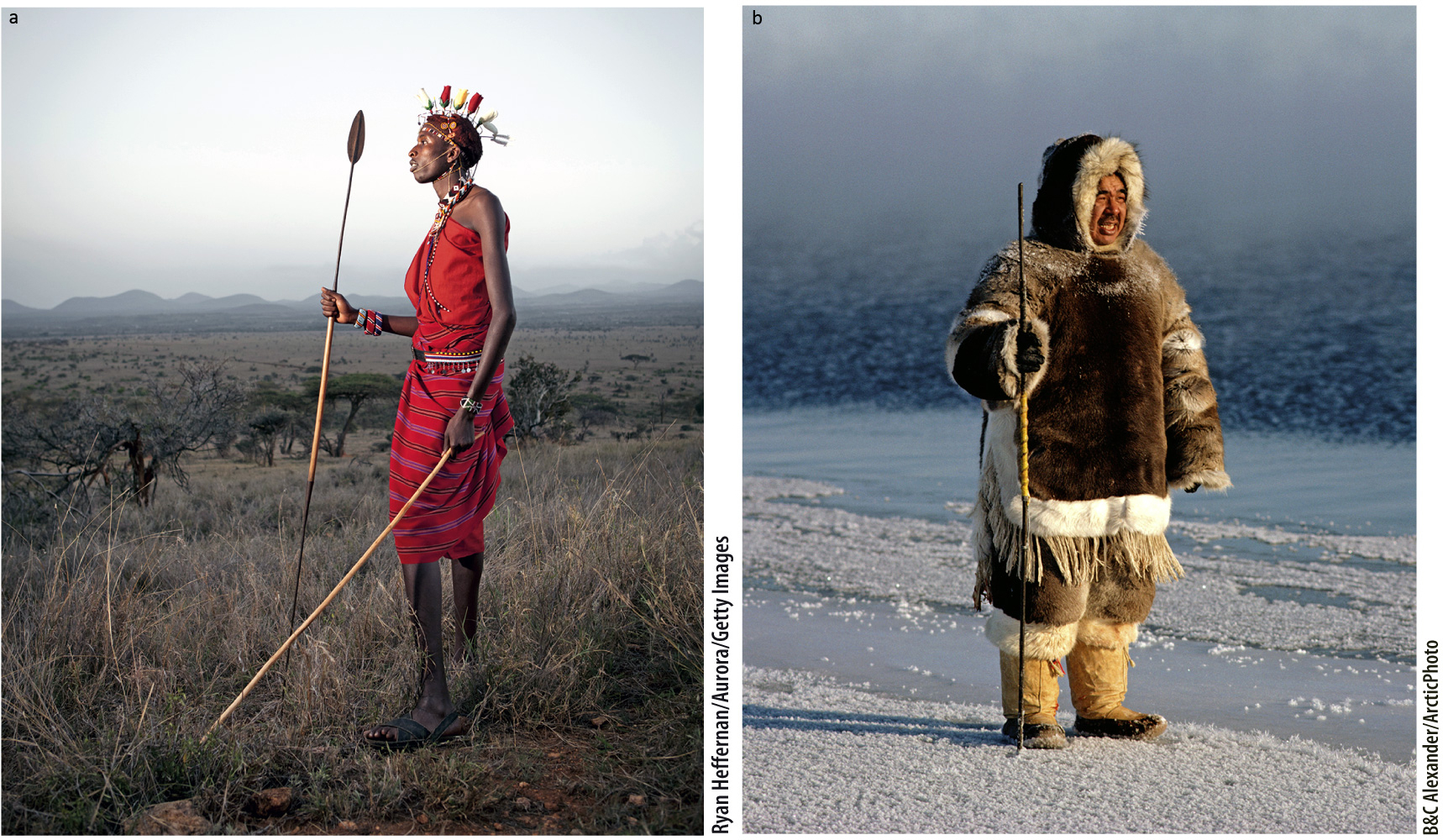Some human differences have likely arisen by natural selection.
Patterns of genetic variation in human populations are shaped by the set of evolutionary forces discussed in Chapter 21. Neutral variants, for example, are subject to genetic drift, and, given the stepwise global colonization history of our species, it is likely that founder events have played a role as well.
Selection, too, has been important. It is apparent, for example, that the genetic variants affecting traits we can easily see are an especially prominent feature of the 7% of human genetic variation that occurs between so-
People with dark skin tend to originate from areas in lower latitudes with high levels of solar radiation, and people with light skin tend to originate from areas in higher latitudes with low levels of solar radiation. It is likely that natural selection is responsible for the physical differences between these populations. Assuming that the ancestors of non-
A likely factor is an essential vitamin, vitamin D, which is particularly important in childhood because it is needed for the production of bone. A deficiency of vitamin D can result in the skeletal malformation known as rickets. The body can synthesize vitamin D, but the process requires ultraviolet radiation. Heavily pigmented skin limits the entry of UV radiation into cells and so limits the production of vitamin D. This does not present a difficulty in parts of the world where there is plenty of sunlight, but it can be problematic in regions of low sunlight. Presumably, natural selection favored lighter skin in the ancestors of Eurasian populations because lighter skin promoted the production of the vitamin.
Some aspects of body shape and size may also have been influenced by natural selection. In hot climates, where dissipating body heat is a priority, a tall and skinny body form has evolved. Exemplified by East African Masai, this body type maximizes the ratio of surface area to volume and thus aids heat loss. In colder climates, by contrast, selection has favored a more robust, stockier body form, as exemplified by the Inuit, who have a low ratio of surface area to volume that promotes the retention of heat (Fig. 24.16). In these two cases, these are plausible explanations of body form. We should bear in mind, however, that simple one-

Attempts have been made to identify the adaptive value of visual differences between races, such as facial features. It’s possible that natural selection played a role in the evolution of these differences, but an alternative explanation, one originally suggested by Charles Darwin, is more compelling: sexual selection (Chapters 21 and 45).
As we have seen, there is an apparent mismatch between the extent of difference among groups in visible characters, such as facial features, and the overall level of genetic difference between human groups. Sexual selection can account for this mismatch because it operates solely on characteristics that can readily be seen—